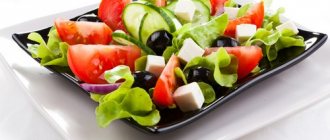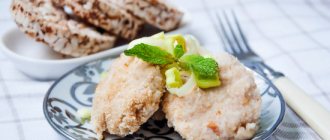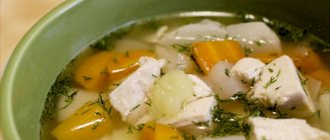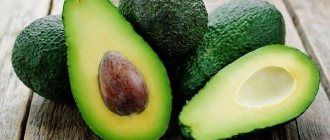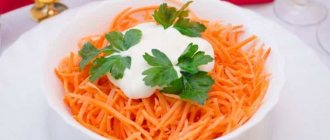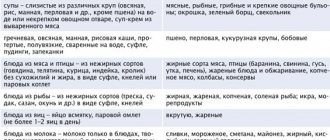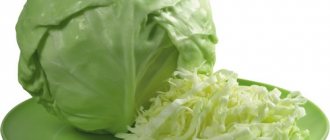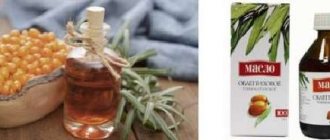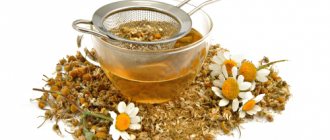Honey is a unique product that has been familiar to people since ancient times. It is eaten in its pure form, used for preparing various dishes, and also for medicinal purposes. However, there are diseases during which it is necessary to adhere to a special diet. That is why people suffering from pancreatitis are interested in the question of whether honey is beneficial or harmful for the pancreas.
First, let's figure out what honey is. This is a natural monosaccharide obtained as a result of the vital activity of bees. It has truly unique healing properties not found in any other product.
Is it possible to use honey for pancreatitis?
The inflammatory process in the pancreas is often accompanied by its excessive secretion. In this case, enzymes are produced in excess and the organ digests itself.
Patients with this diagnosis are prescribed a liquid diet to normalize pancreatic function and avoid other, more serious problems.
Honey, as has been known since ancient times, has an anti-inflammatory effect; it is often used to treat diseases of the digestive tract and more.
Conditionally, the beekeeping product is approved for use for inflammation of the pancreas, but there are certain characteristics that it must meet:
- We choose fresh, not previously heat-treated.
- We make sure that it does not contain other substances that can cause harm to the body.
- The priority is the naturalness of the product, which is difficult to check and confirm without taking samples.
Honey is a source of useful nutrients that the body really needs in case of poor, insufficient nutrition.
You should not eat this product if your doctor recommends a fasting diet. In such a situation, it is better to refuse food until the inflammatory process subsides.
Types of honey
When consuming bee products, you should remember that not all types of bee products can be equally beneficial for the body. To purchase a quality product, you should trust only certified suppliers, and also study in detail the types of honey:
- Buckwheat honey has a dark, brown color. This is an effective anti-inflammatory agent used in the treatment of antiviral diseases, the removal of toxins and stomach ulcers, which can later develop into pancreatitis.
- Zabrusny honey is an atypical honey that contains parts of wax honeycombs (lids with which bees seal the honeycombs). This honey contains a large amount of vitamins and microelements.
- Chestnut honey has antiseptic properties. Specialists treat diseases of the respiratory system, genitourinary system and gastrointestinal tract with the product;
The healing properties and effects of honey for pancreatitis
The beekeeping product has a number of medicinal properties; it will help with inflammation of the pancreas:
- cope with inflammation, improve the functioning of the diseased organ, normalize the process of enzyme production;
- cleanse the liver, stomach and intestines of accumulated toxins, optimize the excretion of bile;
- saturate the body with useful substances, compensate for the lack of vitamins, micro and macroelements.
The composition includes antibiotics of natural origin, they cope with pancreatitis no worse than pharmaceutical ones, when used regularly and correctly.
Honey is considered a unique natural medicine because it coats the mucous membranes of the digestive tract. Promotes restoration of natural microflora, prevents the growth and reproduction of pathogenic microorganisms.
It is used in the treatment of various diseases, not only of the digestive system, but also of the oral cavity, ENT organs, and respiratory system.
At what stage of the disease can honey be consumed?
When consuming a sweet bee product during a period of pancreatitis, you should be guided by several factors that will determine whether honey will be harmful or beneficial:
- form of the disease;
- stage of development of the disease;
- individual characteristics and circumstances.
A period of exacerbation of a chronic disease, and even more so acute pancreatitis, completely excludes the possibility of consuming honey, since one of the main principles of treating this pathology is a strict diet that excludes absolutely all sweets. Also, an absolute ban on introducing a sweet product into the diet will be after confirmation of diabetes mellitus tests.
After an attack of acute pancreatitis, at least 3 months must pass before introducing honey into the diet
If inflammation of the pancreas has become chronic, then at least a month must pass after the exacerbation before honey can be consumed without harm to health. In this case, the person himself must assess his condition as good, and the introduction of the product will be gradual, starting with 0.5 teaspoon.
People suffering from chronic pancreatitis or suspecting problems with the pancreas can not only consume honey, but also need it, as it has enormous healing potential. However, it should be remembered that it does not have any effect directly on the pancreatic tissue, but can greatly improve overall well-being. It should be taken in courses without exceeding the permissible dose.
During the period of exacerbation of inflammation of the pancreas
If the disease is at this stage, then it is better to consume honey in small portions or avoid it altogether.
The problem is that the bee product contains a lot of fructose, which stimulates insulin production. If you eat it in large portions, then there is a risk of encountering complications of pancreatitis.
When the inflammation is acute, the patient is indicated for hospitalization; the doctor may prescribe a starvation diet or create an individual diet in which there will be no place for bee products.
Negative Impact
One of the most dangerous concomitant diseases with pancreatitis is diabetes mellitus, during which insufficient amounts of insulin are produced to process the carbohydrates entering the body. Although honey is acceptable for such problems, its excessive use can lead to the most disastrous consequences. In acute pancreatitis, it is extremely harmful for the same reason.
This is a strong allergen, so if you suspect a possible allergy, you should immediately exclude it from your diet.
In case of excessive use, it can disrupt the proper functioning of the gastrointestinal tract, which can lead to symptoms such as abdominal pain, vomiting, cramps and loss of appetite.
For cholecystopancreatitis
If a person has been diagnosed with this disease, then he should consume honey at least 2 times a day, what are the recommendations for treatment:
- the product, in small quantities, is introduced into the diet;
- eat it on an empty stomach with a small amount of liquid.
In this case, it is necessary to take medications and monitor your diet; it is prohibited to consume:
- Fried, fatty foods.
- Products that irritate the gastrointestinal tract.
- Fast food.
It is better to bake or cook dishes, do not overeat, and eat small portions every 3 hours. You should also give up all bad habits, this will help stop an attack of the disease and reduce the risk of its relapse.
Useful properties of honey
- Has antibacterial, antifungal and antiviral effects.
- Strengthens the immune system, improves blood composition.
- Can be used as a natural sedative (a spoonful of honey taken before bedtime will help a hyperactive child fall asleep faster).
- Increases the overall tone of the body, energizes. In case of severe physical and emotional overload, doctors advise introducing it in small quantities into your daily diet.
- In case of high acidity, it is recommended for use as a product with an alkaline structure. This allows you to neutralize excess acid in the digestive organs.
- A huge number of enzymes contained in its composition improve digestion.
- It is believed that regular consumption of bee products can reduce the risk of cancer.
With propolis
It will help improve your health with proper use and preparation of the medicine.
Table 2. Recipe for medicine No. 1
| What you will need: | 20 grams of licorice root. The same amount of fennel fruits. 20 grams of linden blossom and the same amount of peppermint. We will mix the ingredients with propolis. |
| Creation scheme: | Grind all herbs and flowers using a coffee grinder or blender. Add propolis and mix thoroughly. Let the medicine stand for 2 hours, you can start using it. |
The secret of the healthiest honey
Every person knows that there are many varieties and varieties of honey, but not everyone has heard about the most useful type of honey (especially for pancreatitis), and it is called raw honey.
Zabrus is a mixture of wax, propolis, beebread and pollen. It is with this composition that bees seal honeycombs to prevent pathogens from entering them.
Due to its antimicrobial composition, honey from honey is considered extremely useful for diseases of the gastrointestinal tract. Usually, zabrus is used only for chewing, but especially in case of problems with the digestive system, it is recommended to swallow it, as it can improve intestinal motility and prevent constipation.
If, for some reason, it is not possible to obtain a honeycomb, doctors allow the use of dark varieties of honey, since they contain the maximum amount of useful substances. The light variety has a negative effect on health for pancreatitis, so you should either avoid it completely or consume it in very small quantities.
With agave
You will have to prepare this infusion with honey every day; it will help cope with pancreatic disease.
Table 3. Recipe for medicine No. 2
| What you will need: | Dried, crushed agave. Fresh honey. |
| How to prepare the medicine: | Mix the ingredients in equal proportions. Pour boiling water over 2 teaspoons of agave. When it cools down, add a similar amount of beekeeping product. We insist everything for 2 hours, then filter and take in equal proportions throughout the day. |
Recipes for treatment
It should be said right away that honey by itself, of course, cannot cure the pancreas, but in combination with medications and following a special diet, it can significantly improve its condition. In order for the “sweet medicine” to be beneficial, a number of mandatory conditions must be met when using it:
Jelly recipe for pancreatitis
- It should be consumed on an empty stomach once a day 30 minutes before meals;
- for better absorption, it is recommended to dissolve honey in cool or lukewarm water; it can also be added to various non-hot drinks;
- the product is introduced into the diet gradually, starting with 0.5 teaspoon, but not more than 2 tablespoons per day;
- at the slightest manifestation of a negative effect (pain, nausea, allergic reaction, etc.), you must stop using it and consult your doctor who will help you understand this issue;
- It should not be consumed with lemon juice, but can be added to herbal infusions if desired.
Water with honey
A simple recipe that will help prepare a product that stimulates metabolic processes in the body, accelerates cleansing, and has an anti-inflammatory and antibacterial effect on the human body.
Table 5. Recipe for preparing water with honey for pancreatitis
| What you will need: | A glass of warm water. A teaspoon of honey. |
| How to do: | Add the product to warm water and stir thoroughly. We drink in small sips. |
The water temperature should not exceed 35 degrees, otherwise it will affect the healing properties of the prepared medicine, and in a negative way.
Water can be replaced with a decoction of various medicinal herbs and herbal tea, which will help increase the effectiveness of alternative therapy.
It is better to give preference to clean, spring water; it will bring the greatest benefits to the body.
Application of honey
As mentioned above, honey can be used as part of therapy against pancreatitis, but you don’t need to get carried away and take a little at a time.
Many people consume honey in its pure form, washed down with tea - 1 teaspoon every day, mixed with aloe juice - 1 tablespoon of honey per 1 tablespoon of juice before meals.
The proven properties of honey will have a beneficial effect on any organism, but you still need to consult with specialists before using the product.
News on Notepad-Voronezh
With aloe
The juice of this plant has a lot of useful properties; it is used to treat the runny nose, colds, viral diseases and other origins.
Aloe softens, soothes and has an anti-inflammatory effect on the body. In combination with honey, the plant extract will help cure pancreatitis and optimize the functioning of the pancreas.
Juice can be “extracted” from the leaves of the plant, but if stored for a long time, it will lose its beneficial properties.
Table 6. Recipe for medicine with aloe
| Fresh aloe juice: | One teaspoon. |
| Fresh honey: | Similar quantity. |
Mix the juice and bee product, use a mixer or blender for this purpose. Place the extract in the refrigerator and let it sit for a while until the consistency becomes homogeneous. Mix everything again before use.
Rules of application:
- Aloe juice along with honey is taken in small portions daily.
- The average course duration does not exceed 15 days, and can be extended if necessary.
- The medicine is drunk 3 times a day, you can wash it down with a small amount of water or warm, but not hot, herbal tea.
To treat various diseases, you can use the juice of a plant that is already 3 years old.
Positive effect on the pancreas
The use of this product does not lead to increased enzymatic activity of the gland, which distinguishes it from other sweets. This is due to the fact that glucose and fructose, which are part of natural sweetness, are broken down in the intestines without the participation of enzymes secreted by the pancreas.
Antibacterial and antiseptic properties have a beneficial effect on the pancreas, activating the processes of regeneration of damaged tissue. This is very important for inflammation.
Normalizes the carbohydrate-fat balance in the body, which leads to the restoration of proper metabolism and prevents the formation of excess weight. This is important both for pancreatitis and for its prevention.
Including it in the daily diet helps strengthen the immune system and increase resistance to all diseases, which is very important for an organism weakened by illness.
The enzyme-rich product has a mild laxative property, which alleviates conditions associated with constipation due to pancreatitis.
Honey can have a general strengthening effect on the body, but in case of diseases of the gastrointestinal tract, you should consult a specialist before using it
How to use the product correctly
Modern dietetics does not provide special requirements for the choice of honey for pancreatitis. They do not differ from the standard ones in case of illness. The main requirement is the naturalness of honey. No foreign impurities or synthetic additives are allowed in the composition. It does not matter from which plant the honey is collected. The patient is guided by his own preferences.
Eating honey for pancreatitis is allowed only in the stage of stable remission, when the patient does not complain of abdominal pain, nausea or stool disorders.
- Consume 2 tablespoons of the product per day.
- Start consuming the product with a minimum amount and carefully monitor your condition.
- If, in response to consuming the product, abdominal pain, vomiting or an allergic reaction occurs, you will have to exclude honey from your daily diet for a while.
- It is strictly forbidden to eat honey during the acute stage of the pathological process.
- After the condition normalizes, you need to wait some more time.
It is beneficial for the body to drink a glass of warm boiled water on an empty stomach in the morning with the addition of a teaspoon of honey. The beekeeping product is used as a sugar substitute and added to tea. It is allowed to consume the sweetness separately as a bite or dissolve it in a glass of warm drink.
If the patient is diagnosed with diabetes, you will have to stop eating the treat. You will need to undergo a full examination of the condition of the pancreas. It is recommended to do an ultrasound scan of the organ, paying close attention to the condition of the islet cells. It is necessary to conduct a biochemical blood test. If a patient has diabetes, the utilization of glucose in the body will be impaired, and most carbohydrates will have to be excluded from the diet.
If, with chronic pancreatitis, the patient strictly adheres to the diet, following the doctor’s recommendations, consuming honey for pancreatitis is acceptable and will benefit the patient’s body.
Nutrition in the acute stage of pancreatitis
In the most acute stage of the disease with severe pain and signs of significant digestive disorders, short-term therapeutic fasting can be used.
This recommendation was voiced by doctors of past centuries, who, in case of acute pancreatitis, prescribed cold (to the area of the inflamed organ), hunger and physical rest to their patients. During this period, non-irritating fortified and alkaline drinks are acceptable; if necessary, parenteral (intravenous) nutrition is prescribed. But the use of enzymes during this period is inappropriate, because the intestines simply do not receive any food that needs digestion. Fasting for acute pancreatitis usually lasts 2–3 days. During this time, the symptoms subside, which makes it possible to switch to dietary nutrition - step by step:
- The first days after fasting, the diet is low-calorie and as gentle as possible. The dishes are puree-shaped, semi-liquid, pureed. They are steamed or boiled and cooled to body temperature when serving. This menu is predominantly carbohydrate-based and does not involve the use of multi-component recipes and spices.
- After the severity of symptoms of pancreatitis decreases, food becomes more varied and high-calorie. At the same time, the menu is expanded gradually, focusing on well-being and the degree of absorption of food. On days 4–5, easily digestible proteins (cottage cheese, boiled lean meat, eggs) are introduced, then a small amount of butter. Vegetable oils are not yet used. Dishes are still boiled and steamed. They are no longer pureed, but chopped or served in the form of soups, soufflés and casseroles.
- In the next 8–12 months, nutrition for pancreatitis remains gentle and fractional, although not so strict. In general, during this period the diet resembles the menu for chronic pancreatitis. Vegetable oils are introduced, dishes become more varied.
From the first days after completing the fast, the diet is supplemented with the use of enzyme preparations. For this, Micrasim® is prescribed, for example. This allows you to partially compensate for the lack of your own pancreatic enzymes and avoid its overload. This is especially important when consuming fatty foods.
Following a diet for pancreatitis is the most important therapeutic point during an exacerbation. It is this that contributes to the gradual normalization of the functioning of the inflamed pancreas and the entire digestive tract. And the prescribed medications help cope with the symptoms, partially relieve the load on the affected organ and compensate for the relative enzyme deficiency.
Products to exclude
You may have to give up some foods completely.
If you have cholecystitis and pancreatitis, you should not eat any foods that complicate digestion and can cause an exacerbation of the disease. Prohibited products include the following:
- Strong tea and coffee, carbonated drinks. All this is undesirable even for a healthy person, and even for a person suffering from pancreatitis and cholecystitis, he should completely abandon these drinks.
- Alcohol. Alcohol can provoke an exacerbation of inflammation. It has a general negative effect on the entire body, disrupting the functioning of the intestines and pancreas.
- Fatty meat, lard. All fatty foods make digestion difficult, causing the body to produce more bile and pancreatic juice, which is extremely undesirable.
- Fresh baked goods. Fresh baked goods are a difficult test for the pancreas and gall bladder.
- Meat broths. If you think that chicken broth is a cure for all diseases, you are mistaken.
- It is difficult to imagine something more harmful to the pancreas than rich broth. Fatty broths can cause even greater harm to the body; you simply need to avoid them.
- Mushrooms. This is a controversial product. Some classify it as dietary, while others consider it harmful to digestion. Mushroom broths should be excluded. If you want to eat mushrooms, it is better to select only the caps.
- Some fresh vegetables. It is not recommended to eat sour vegetables that irritate the gastric mucosa: radishes, sorrel, green onions.
- Chocolate, cream. Most sweets have a negative effect on the pancreas and gall bladder. You will understand this almost immediately, because after eating chocolate, nausea often appears.
- Spicy seasonings and sauces. Nothing spicy is strictly forbidden. This can cause an attack of severe pain.
- Smoked and salted. These products not only irritate the gastric mucosa, but are also poorly digestible, cause indigestion, and disrupt the functioning of the intestines and pancreas.
Diet rules for chronic pancreatitis
It is important to understand that with pancreatitis, a diet is needed not only during an exacerbation. It plays an important role even after the main symptoms subside, especially when the disease becomes chronic. After all, errors in nutrition during pancreatitis, even during this period, are fraught with a rapid and significant deterioration in well-being. In this case, they speak of a relapse or exacerbation of the disease, and the treatment tactics used are similar to the treatment of the primary acute attack of the disease.
Therefore, diet for chronic pancreatitis has a rather supportive and preventive value. If it is followed, a person does not suffer from physical discomfort and a noticeable deterioration in the quality of life. Although some people need quite a long time to get used to strict prohibitions on the consumption of certain foods and dishes.
On the recommendation of a doctor, such a diet is often combined with supportive drug therapy - taking enzyme preparations.
“Forbidden” foods: what you should avoid if you have pancreatitis
A diet for pancreatitis involves both the refusal of certain foods and the exclusion of certain methods of cooking. Moreover, the recommendations are aimed primarily at limiting the consumption of foods that can irritate the digestive system or provoke increased secretion.
Particular attention is paid to foods high in fat. Their digestion requires increased secretion of lipase (one of the pancreatic enzymes), which can provoke an exacerbation of the disease. But you can’t completely give up fats in your diet without permission. After all, they are necessary for the synthesis of hormones and enzymes, for the construction of cell walls and nerve fiber sheaths, and for maintaining the normal condition of the skin.
| Product | Why is it excluded for pancreatitis? |
| Juices | Juices for pancreatitis are considered undesirable products. After all, the acid they contain often has an irritating effect and provokes increased production of gastric juice and all digestive enzymes. And this is fraught with exacerbation of pancreatitis. Only during a period of persistent improvement are juices diluted with water sometimes allowed. |
| Fresh (not thermally processed) fruits, berries | They have about the same effect on the digestive tract as juices. Fruits for pancreatitis can be consumed occasionally, baked or as part of non-concentrated compotes. |
| Sour and fiber-rich vegetables. Pickles, marinades, canned food (including homemade) | They have an irritating effect. Particularly undesirable for pancreatitis are tomatoes, turnips, radishes, radishes, spinach and sorrel, and fresh white cabbage. Pickled vegetables, pickled and salted foods for long-term storage, and canned food are also prohibited. |
| Legumes. Mushrooms. | The vegetable protein they contain can provoke increased activity of the pancreas. In addition, legumes contribute to increased gas formation in the intestinal lumen, which usually negatively affects the well-being of a person with chronic pancreatitis. |
| Alcohol, carbonated drinks | They stimulate the production of all digestive enzymes and have an irritating effect on the mucous membrane of the entire gastrointestinal tract. In approximately 25% of cases, exacerbation of pancreatitis is associated with alcohol consumption. |
| Fresh bread, baked goods, confectionery | They are a source of large amounts of quickly digestible carbohydrates, which provoke the rapid release of a significant amount of insulin. And this is accompanied by significant stimulation of the pancreas. Its overload is also facilitated by the combination of large amounts of carbohydrates and fats in baked goods, creams, and baked goods. |
| Fried foods | Frying foods to form a characteristic appetizing crust is accompanied by the formation of a number of potentially harmful substances. These include nitrosamines, acrolein, acrylamide and some others. They have a carcinogenic effect, irritate the mucous membrane of the digestive tract and provoke increased production of enzymes. Frying is also accompanied by an increase in the fat content of the product. As a result, its digestion requires more time and enzymes, which the pancreas is unable to provide during pancreatitis. |
| Sausages | Smoked and boiled-smoked sausages, sausages and sausages with a large number of additives are prohibited. Irritate and overstimulate the entire digestive tract. At the same time, boiled sausages from lean meats and ham from poultry are sometimes acceptable. |
| Mayonnaise, ketchup, other factory-made sauces | They have an irritating effect on the mucous membrane of the gastrointestinal tract and overstimulate the pancreas. |
| Snacks (chips, flavored crackers, etc.), cookies and factory-made cakes | The numerous chemical compounds they contain irritate the digestive tract. And an increased amount of low-quality fats provokes overload of the pancreas. |
Lard, fatty meats, lard, high-fat fermented milk products, and vegetables fried in oil (for seasoning soups and sauces) are also undesirable. Whether it is possible to consume other foods with a fairly high percentage of fat if you have pancreatitis, you should check with your doctor or nutritionist.
What can you eat?
Having received a rather large list of undesirable foods from the doctor, many people wonder what to eat if they have pancreatitis? After all, for people with this disease, diet is by no means a short-term measure. And I want to eat something tasty and not monotonous.
| Cereals | They use buckwheat and semolina, oat and wheat flakes, and rice. Millet and barley cereals are rarely acceptable, only if they are well tolerated. Pearl barley is rarely used and is difficult for most people to digest. |
| Vegetables | Mostly boiled or steamed. Zucchini, carrots, cauliflower, peas, potatoes, beets, and cucumbers are allowed. Tomatoes are introduced during the period of persistent improvement in small quantities and only if well tolerated. |
| Meat, poultry | Low-fat varieties (beef, rabbit, chicken, turkey). Any fatty layers that come across must be carefully cut off. The meat is boiled and steamed. During the period of persistent improvement, it is sometimes permissible to bake it in a sleeve without marinating. |
| Fish | Low-fat varieties, steamed or boiled. Poaching (simmering in a small volume of water) is not recommended, as this contributes to the formation of irritating extractive substances. Suitable species include pike perch, cod, pollock, pike, carp, perch, hake, whiting. |
| Eggs | Fried and hard-boiled eggs are excluded. Steamed and baked omelettes are preferred, but other cooking methods can be used. |
| Dairy | Only low-fat ones. You can use cottage cheese, acidophilus, kefir, yogurt. Milk is mainly used as an additive to cereals and drinks, as part of soufflés and omelettes. Cheese – low-fat varieties are allowed in small quantities, and only as an additive to dishes. |
| Bread, cookies | Bread – wheat, stale, dried is recommended. Cookies are used infrequently, and they should be insipid, biscuit-like. |
| Fruits, berries | Mainly baked or as part of compotes, jelly, jellies, mousses, marshmallows. Apples and dried fruits (in small quantities) are optimal. |
| Beverages | Weak tea (maybe with a little lemon), not concentrated compotes, mineral water, rosehip infusion |
